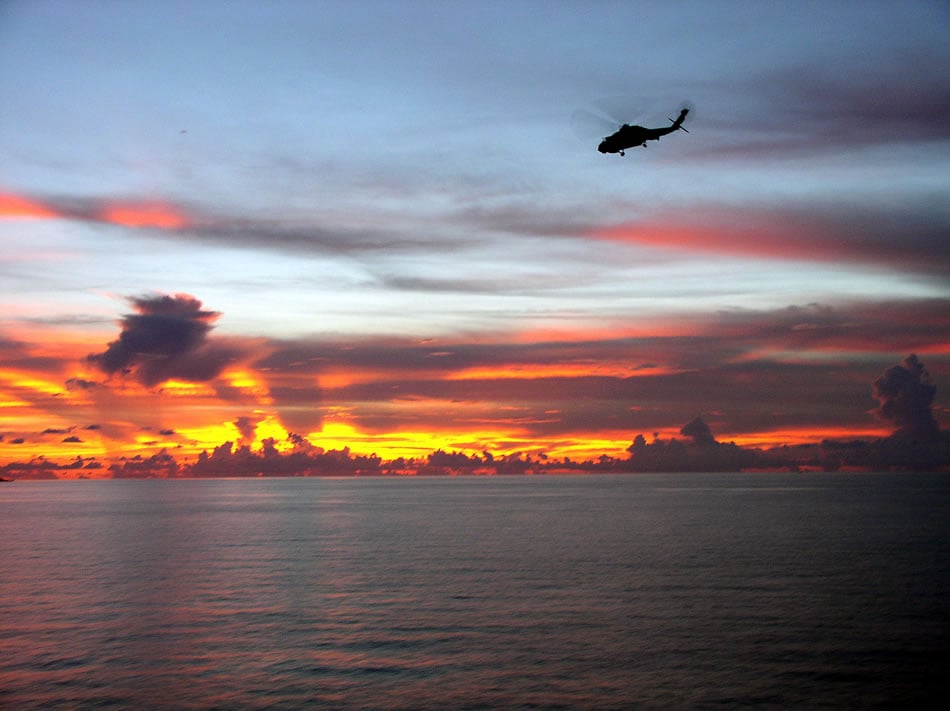GailForce: Thoughts on Our Pacific Maritime Strategy from AFCEA WEST 2014 Conference Part Two

When discussing the Pacific region, a frequently mentioned concern on the part of Department of Defense and other government officials is China’s lack of transparency about its military modernization. During a presentation given at the AFCEA West Conference last month Captain Jim Fanell, head of the Navy’s Pacific Fleet Intelligence Staff, remarked , “he didn’t know how China could be any more transparent.” During his talk he continued on a theme he presented at the same forum last year where he had stated:
“In my opinion, China is knowingly, operationally and incrementally seizing maritime rights of its neighbors under the rubric of a maritime history that is not only contested in the international community, but has largely been fabricated by Chinese government propaganda bureaus in order to quote-unquote “educate” the populace about China’s “rich maritime history” clearly as a tool to help sustain the Party’s control.”
Last year he also gave what I thought was an interesting statement of his perception on China’s attitude towards its neighbors:
“China is negotiating for control of other nations’ resources off their coasts. ‘What’s mine is mine, and we’ll negotiate what’s yours.’”
Here’s a brief summary taken from a March Congressional Research Service report written by Ronald O’ Rourke:
- a dispute over the Paracel Islands in the South China Sea (SCS), which are claimed by China and Vietnam, and occupied by China;
- a dispute over the Spratly Islands in the SCS, which are claimed entirely by China, Taiwan and Vietnam, and in part by the Philippines, Malaysia and Brunei, and which are occupied in part by all these countries except Brunei;
- a dispute over Scarborough Shoal in the SCS, which is claimed by China,Taiwan, and the Philippines; and
- a dispute over the Senkaku Islands in the East China Sea(ECS), which are claimed by China,Taiwan and Japan, and administered by Japan.
Captain Fanell provided a lot of data gleaned from unclassified sources to support his conclusions. Here are some of the points he made that jumped out at me:
- In January 2013 Chinese warplanes were daily making simulated attack runs straight at Japan or Japanese Naval Forces within the East China Sea.
- Chinese bombers flew strike training missions into the Philippine Sea, a first in PLA history.
- On January 29, 2013, President Xi Jinping delivered a speech to the Politburo in which he effectively ruled out compromise on territorial and security issues.
- At the same time, 20 South Sea Fleet warships conducted a five day anti-air attach and anti-nuclear exercise in the South China Sea, while three warships went to the Philippine Sea for combat drills including “the protection of maritime rights” drill.
- The next week in the East China Sea Japan said a Chinese warship locked its fire control radar onto a Japanese warship.
- China denied it for a month, and then admitted it occurred. However, China said it was not a danger since the range between the two ships was too close for a weapon system.
- In addition to China’s long standing task to restore Taiwan to the mainland, last year the Chinese conducted a massive amphibious and cross military region exercise and concluded that their forces had been given a new task to be able to conduct a short, sharp war to destroy Japanese forces in the East China Sea followed by a seizure of the Senkaku Islands or even the Southern Ryukyus as some of their academics write about.
- The Chinese also trained to deter and destroy any attempted interference by the U.S. Naval and Air Forces during another exercise.
- The amount of time Chinese Surface Action Groups train in the Philippine Sea now rivals that of the U.S. Navy.
- In November, China publicized the development of their submarines nuclear ballistic missile to include discussions of what U.S. cities they’d strike.
- Expect this year or next China will declare an ADIZ for the South China Sea.
In the days since Captain Fanell’s talk, senior officials have downplayed it and said the captain was only expressing his opinion. Captain Fanell is doing exactly what he should be doing, giving his boss, the Commander of the U.S. Pacific Fleet, his honest opinion based on his knowledge of Chinese history, extensive analysis of observed events, and information derived from various intelligence sources.
He bought up the potential for miscalculation. Obviously a diplomatic solution to the territorial disputes is the best outcome. The problem is if either side miscalculates and make what is perceived to be a provocative move, a crisis can break out. Think I’ll end here. As always, my views are my own.
